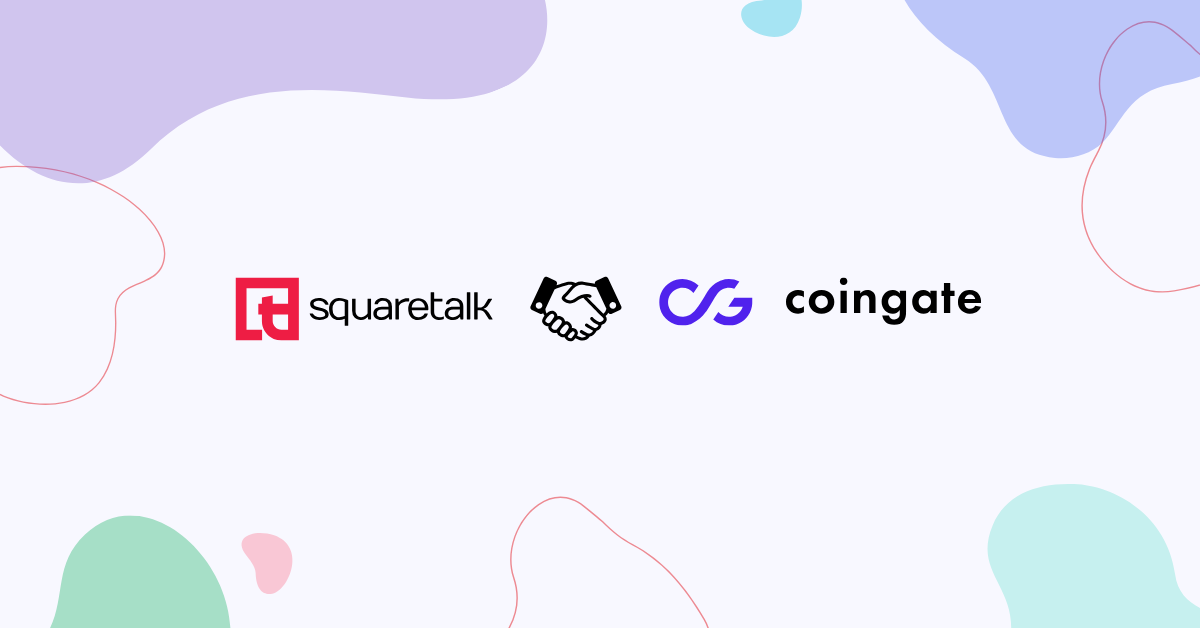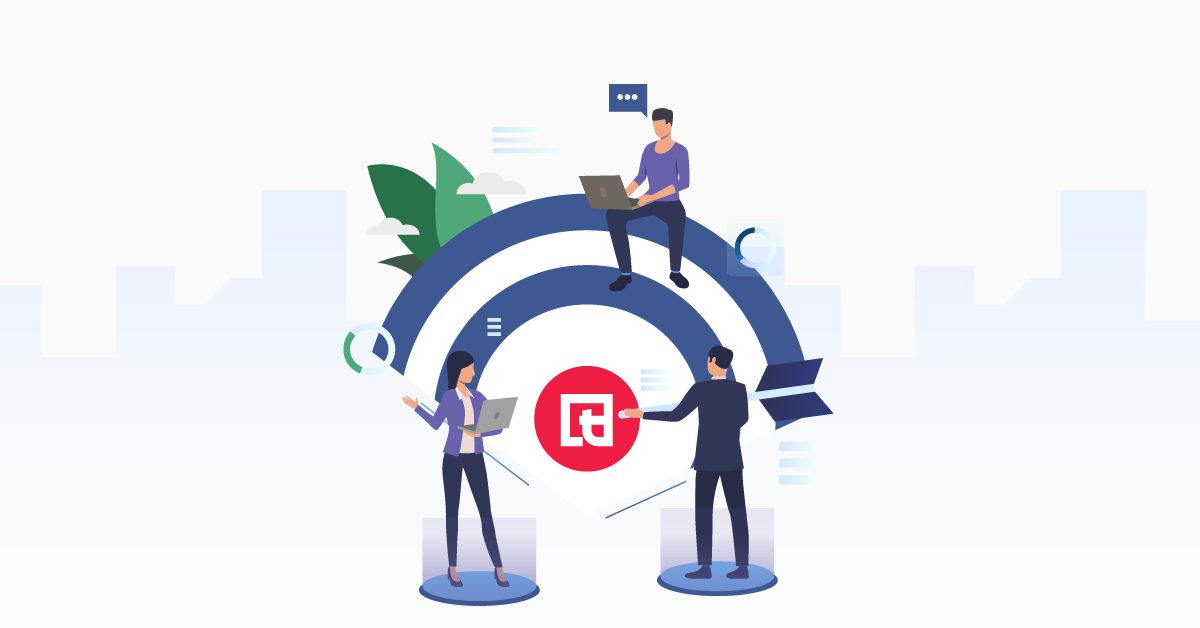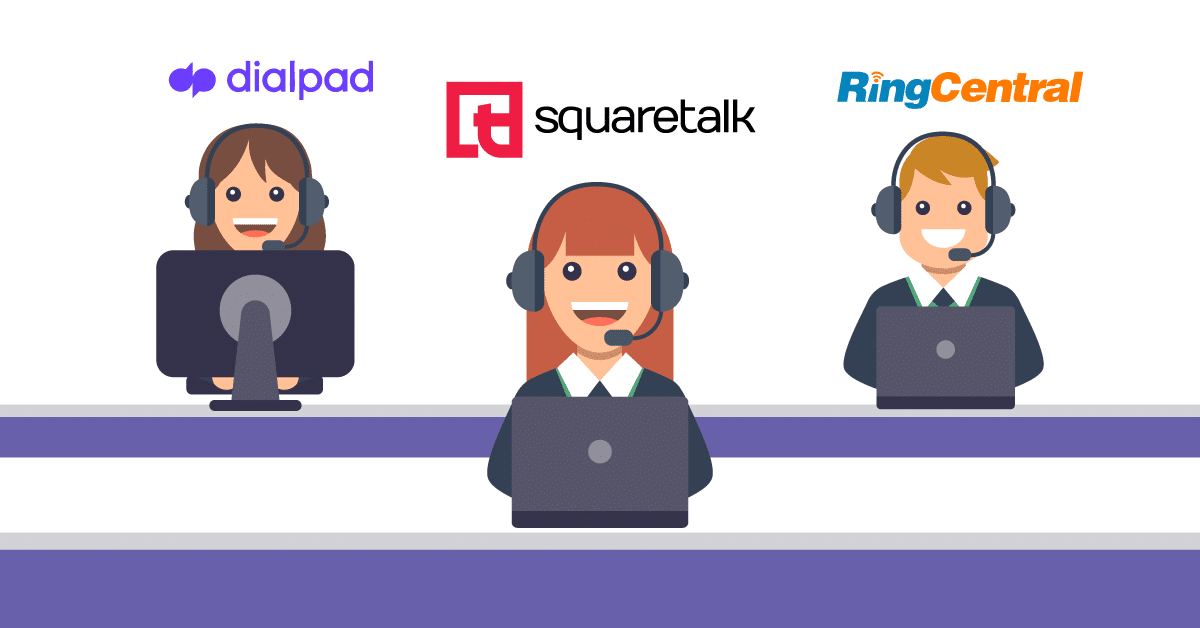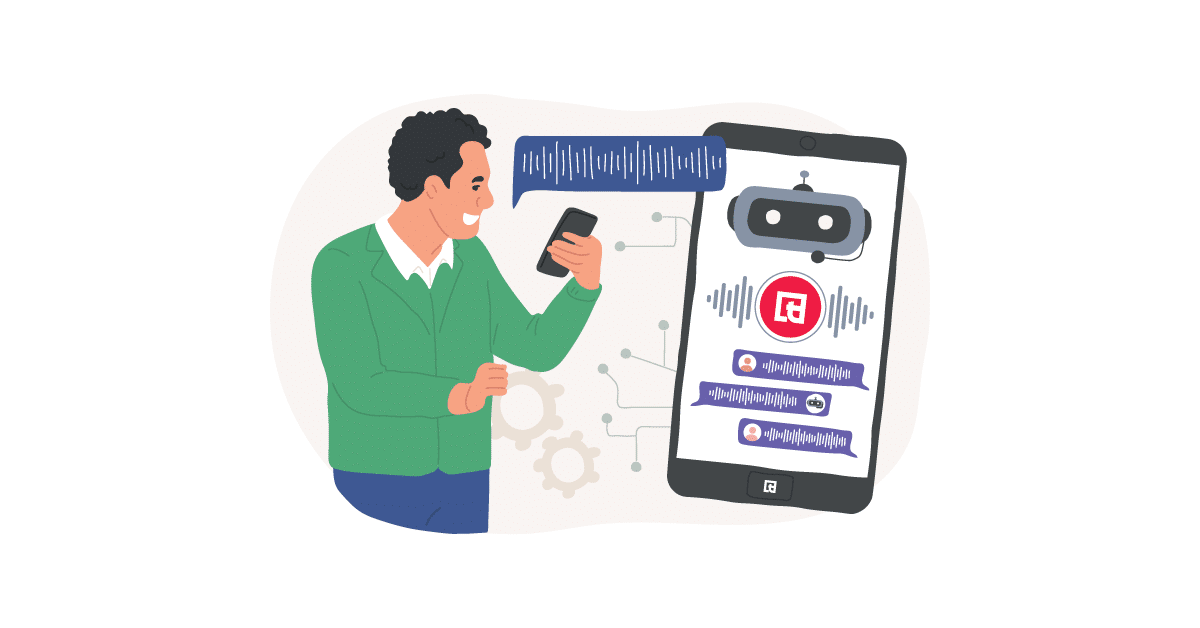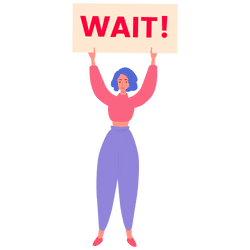Is your call center consistently missing service level targets? Is customer satisfaction plummeting, while agent turnover is skyrocketing?
What’s the culprit?
Whether you’re managing an inbound customer support center or an outbound sales operation, the problem may lie in the occupancy rate. This often-overlooked metric holds the key to unlocking your call center’s full potential – or derailing its success.
In this comprehensive guide, we’ll dive deep into the world of call center occupancy rates. You’ll discover how this crucial metric impacts every aspect of your inbound or outbound operation, from customer satisfaction to your bottom line.
Definition of Call Center Occupancy
Call center occupancy is the percentage of time agents spend actively handling customer interactions compared to their total logged-in time. This includes:
- Talk Time: The time an agent spends actively talking to customers.
- Hold Time: The time customers are on hold during the call, while the agent is working on resolving the issue.
- After-Call Work (ACW) Time: The time an agent spends completing tasks related to the call after it has ended.)
The occupancy rate is calculated using this formula:

- Total Logged-in Time: The total time the agent is logged into the system, ready to take calls, which includes time spent on calls (talk, hold, and ACW time) and any idle time.
This formula applies to both inbound and outbound call centers, but the components may be interpreted slightly differently:
In Inbound Call Centers
- Talk time begins when an agent answers an incoming call.
- Hold time might happen when agents need to consult with supervisors or look up information.
- ACW often involves updating customer records or logging call outcomes.
(45 / 60) × 100 = 75% occupancy rate
In Outbound Call Centers
- Talk time starts when a customer answers the call.
- Hold time is less common but might occur during transfers or consultations.
- ACW may include updating lead status or scheduling follow-ups.
(50 / 60) × 100 = 83.3% occupancy rate
It’s important to note that in outbound centers, time spent dialing or waiting for answers is often included in the occupancy calculation, as it’s considered part of the call handling process.
Occupancy vs. Utilization
While often used interchangeably, occupancy and utilization are different metrics:
- Occupancy focuses solely on call-related activities and idle time.
- Utilization counts all work-related actions, including training, meetings and administrative tasks.

The utilization rate formula is:

- Occupancy Rate: (5 / 8) × 100 = 62.5%
- Utilization Rate: (5 + 1 + 2) / 8 × 100 = 100%
Understanding this distinction is crucial to accurately measure performance and allocate resources in both inbound and outbound operations. Occupancy gives you insight into how busy agents are with customer interactions, while utilization provides a broader view of how they spend their entire work day.
Call Center Occupancy's Impact on Your Business
Call center occupancy rates can significantly influence various aspects of your operations. You have to consider the effects of both high and low occupancy:
High Occupancy Rate (90% and Above)
Operating with near-maximum occupancy can impact your operations with:
- Agent Burnout: In both inbound and outbound centers,, constantly high occupancy can lead to stress, fatigue, and eventual burnout among agents.
- Higher Turnover: Burnout often results in attrition, increasing hiring and training costs.
- Decreased Quality: Overworked inbound agents may rush through calls, compromising service quality, while sales reps might resort to aggressive tactics or skip important script elements to meet high call quotas.
- Increased Errors: Fatigue can lead to more mistakes in data entry, problem-solving, lead qualification or product information.
- Reduced Flexibility: With agents constantly on service calls, there’s little room to handle unexpected spikes in incoming call volume. For outbound campaigns, high occupancy leaves less time for list management or strategy adjustments.
Low Occupancy Rate (Below 70%)
When a smaller percentage of your agents is taking care of call-related tasks, this can result in:
- Increased Costs: Low occupancy often indicates overstaffing, which means unnecessary labor costs.
- Bored Agents: Underutilized employees may disengage, which affects their performance when they do speak with customers.
- Skill Degradation: With fewer calls to handle, agents may lose proficiency in solving complex issues or their sales skills.
- Wasted Resources: Low occupancy suggests inefficient use of your workforce and technology.
- Missed Opportunities: If the unoccupied staff is a result of low call volume, this might indicate that you’re missing chances for customer engagement or sales. Low occupancy in outbound call centers could also be a result of ineffective lead generation or poor list management.
Optimal Occupancy Rate (70-90%)
Generally, the best approach is to strive for a healthy mix of efficiency and employee case. A balanced occupancy rate typically brings out:
- Proportional Workloads: Agents have enough tasks to stay engaged without being overwhelmed.
- Improved Quality: With reasonable amounts of work, your support staff can focus on providing high-value service, while sales agents can dedicate appropriate time to each prospect, improving conversion rates.
- Cost Efficiency: Optimal occupancy ensures you efficiently use resources without having unnecessary labor costs.
- Adaptability to Volume Fluctuations: With agents not constantly engaged in calls, customer support staff has the capacity to handle sudden spikes in call volume and sales reps can do proper lead research and strategy refinement between interactions.
- More Employee Satisfaction: Less stress and a balanced load lead to job contentment and lower turnover rates.
Factors That Affect Occupancy Rates
Knowing which circumstances can impact occupancy is crucial for your effective call center management in both inbound and outbound environments. These factors include:
Call Volume Fluctuations
Seasonal trends, marketing campaigns or unexpected events can cause spikes or dips in incoming call volume, directly impacting occupancy rates.
List quality, time of day, and campaign schedules can affect the number of successful connections for outbound operations.
Personnel Levels
Over- or understaffing can lead to occupancy rates that are too low or too high, respectively.
Longer call durations in customer support can increase occupancy rates, while shorter calls may decrease them.
In outbound communications, script length and complexity can affect call duration and, consequently, occupancy.
Agent Skill Levels
More experienced employees will most likely handle support calls more efficiently, potentially affecting occupancy.
Skilled sales agents might achieve higher contact and conversion rates, which also impacts occupancy rates.
Technology and Automation
The efficiency of call routing systems, Customer Relationship Management (CRM) software and other well-integrated tools can reduce idle time between support interactions, potentially increasing occupancy. Automated self-service options can further lessen the burden by impacting the volume of calls that reach agents.
For sales operations, dialer systems (AI, predictive, automated predictive, power, auto or progressive) or significantly affect occupancy rates.
Types of Inquiries/Campaigns
Complex issues that require more time to resolve can increase occupancy rates in inbound call centers, while simple problems and informational inquires may lower them.
Occupancy in outbound operations is affected by the type of campaign you are running. For example, direct sales typically have longer call time than surveys.
The amount of time agents spend on post-call tasks affects how fast they’ll be available to handle the next incoming call.
Logging call outcomes and updating lead statuses impacts how many potential customers your representatives can contact during their shift.
Schedule Adherence
How closely agents stick to their assigned working hours can impact overall occupancy rates.
List Quality and Management
The accuracy and freshness of contact lists directly impact the number of successful outbound connections and, consequently, how busy your agents are contacting potential clients.
Regulatory Compliance
Compliance requirements for inbound call centers, like GDPR (General Data Protection Regulation) in the European Union, PCI DSS (Payment Card Industry Data Security Standard) and HIPAA (Health Insurance Portability and Accountability Act) in the United States (US), may increase handle times.
Regulations like do-not-call lists, TCPA (Telephone Consumer Protection Act) in the US and calling time restrictions affect when and who you can contact. Restrictions on outbound calling practices may reduce the pool of contactable leads, potentially lowering occupancy
Cultural and Regional Factors
Language requirements and cultural expectations can affect call durations when you’re operating an international customer support call center or hire multilingual agents.
Cultural norms around telemarketing and optimal calling times vary by region, which can impact your occupancy levels.
Integration with Other Channels
In call centers with multi- and omnichannel support, occupancy rates can be significantly impacted by the integration of various communication channels:
- An agent might simultaneously manage a phone call and a chat session, potentially increasing occupancy rates.
- Time spent transitioning between channels (e.g., from chat to phone) can impact occupancy calculations.
- Different channels typically have different average handle times, affecting overall occupancy rates.
In multichannel outreach campaigns:
- Agents might follow up a phone call with an email or SMS, affecting how occupancy is calculated and managed.
- Tailoring outreach to customer-preferred channels can impact contact rates and, consequently, occupancy.
- Integrating outbound calls with digital marketing efforts (e.g., following up on website interactions) can influence the quality of conversations and their duration.
By considering these factors, you can better understand occupancy fluctuations and develop more effective strategies for optimization.
Occupancy Standards
Inbound Call Centers Occupancy Standards
- Optimal Range: Most inbound call centers aim for an occupancy rate between 75% and 85%. This range typically balances productivity with agent well-being and service quality.
- Lower Threshold: Occupancy rates below 75% might indicate overstaffing or inefficient call distribution.
- Upper Threshold: Rates above 85% can lead to agent burnout and decreased service quality due to the constant pressure of back-to-back calls.
- Flexibility Buffer: Inbound centers often maintain a lower occupancy target to handle unexpected call volume spikes and maintain service levels.
- High-Volume Centers: Some support call centers may strive for occupancy rates of 90% or slightly higher. They can achieve these target because they handle mostly straightforward interactions, like basic customer service or order taking, that are repetitive and need minimal ACW.
- Complex Service Centers: Call centers handling complex inquiries might target lower occupancy rates, around 70-80%, to allow agents more time for research and problem-solving.
Outbound Call Centers Occupancy Standards
- Optimal Range: Outreach operations generally target higher occupancy rates, typically between 80% and 95%.
- Lower Threshold: Rates below 80% might suggest issues with list quality, dialer efficiency or overstaffing.
- Upper Threshold: While some outbound centers push for very high occupancy (90-95%), you need to carefully manage them to prevent agent burnout.
- Predictive Dialing Impact: Centers using predictive dialers might achieve higher occupancy rates, sometimes exceeding 95%, but this requires close monitoring of abandonment rates and agent stress levels.
Factors Influencing Occupancy Standards
- Call Complexity: Centers handling more complex inquiries or sales processes might target lower occupancy rates to allow for necessary research or personalized service.
- Service Level Agreements (SLAs): Contractual obligations for response times or abandonment rates can influence occupancy targets, especially in inbound centers.
- Agent Experience: More experienced teams might be able to handle higher occupancy rates efficiently.
- Technology and Tools: Advanced CRM systems, AI-assisted tools or efficient IVR/dialer systems can support higher occupancy rates.
- Regulatory Environment: Compliance requirements can impact achievable occupancy rates, particularly in heavily regulated industries.
Occupancy Standards by Channel
Different communication channels often have varying occupancy rate standards due to their unique characteristics.
Inbound Contact Centers
Voice Calls: They typically aim for 80-90% occupancy because customers seek immediate response and sometimes the inquiries require complex solutions.
Live Chat: The occupancy rates here are often higher, around 85-95%, as agents can handle multiple chats simultaneously.
- Email: This channel has a lower occupancy, usually 60-75%, because it allows for more research time and thoughtful responses.
- Social Media: Similar to email, the standard occupancy rates are around 60-75%. Communication here has an additional layer of consideration and careful crafting of public-facing responses.
Outbound Contact Centers
- Voice Calls: Higher occupancy (85-95%) are possible because you have control over call initiation and advanced dialer technology filters disconnected numbers and voicemails, which impact connectivity and talk time.
- Email Outreach: Here, occupancy includes also the time spent crafting emails, personalizing content and managing responses. The standard rate (70-85%) are lower than voice due to the non-real-time nature of email interactions. Calculations might be affected by email quotas and the fact that agents might fill the time between email tasks with other activities to maintain higher overall occupancy.
- SMS/Text Messaging: The occupancy rates are higher (85-95%) due to the quick nature of text interactions. Similar to email, occupancy includes time spent composing messages, waiting for responses and managing multiple conversations simultaneously. Automated systems may handle initial outreach, with agents becoming occupied when live responses are received.
- Social Media Outreach: The occupancy standards (70-85%) are lower than voice and SMS because, as with inbound centers, the content needs to be well-tough-out. Occupancy includes time spent researching profiles, crafting personalized messages, engaging in conversations, monitoring social media feeds and identifying outreach opportunities.
Common Pitfalls in Measuring Occupancy Rates
Accurately measuring occupancy rates is crucial for making informed decisions. Here are some common mistakes to avoid:
- Incomplete or Inaccurate Data Collection: Failing to capture all relevant stats or relying on faulty data measurements can skew your occupancy calculations. They can be also affected if you din't count the time spent on list management, research or unsuccessful dial attempts.
- Ignoring ACW: Failing to include the time needed for after-call tasks can artificially inflate occupancy rates. This is especially critical in complex service environments that require extensive documentation.
- Overlooking Unproductive Time: Not accounting for work disruptions like technical issues, system downtime or time spent waiting for incoming calls can result in an inaccurate representation of true occupancy. For outbound operations, it's important to also count the time spent on list cleaning, lead research or waiting for optimal calling times.
- Not Accounting for Channel Differences: Applying the same occupancy standards across all channels can lead to unrealistic expectations.
- Neglecting Seasonality and Inconsistent Periods: Not accounting predictable busy periods, different shift durations or campaign-specific variations can result in misinterpretation of occupancy data.
- Disregarding Variations in Occupancy: Relying solely on average occupancy rates can hide important fluctuations throughout the day or week. This can lead to missing periods of extreme high or low occupancy that require attention.
- Prioritizing Occupancy Over Quality: Focusing too heavily on achieving high occupancy rates in inbound call centers can lead to rushed interactions and decreased service quality. This can result in lower customer satisfaction and increased callbacks, ultimately harming overall efficiency. In outbound call centers, overemphasis on occupancy might result in poor-quality conversations and lower conversion rates.
- Failing to Consider Staffing Constraints: Setting occupancy target without factoring in the limitations of your workforce, like illnesses, skill gaps and onboarding needs, can lead to unrealistic goals and increased stress.
- Missing out on Real-Time Monitoring: Not track occupancy live can result in missed opportunities to make immediate adjustments.
- Overreliance on Automation: Excessive use of IVR systems might artificially inflate support agent occupancy while reducing customer satisfaction. For outreach operations, over-dependence on predictive dialers might lead to unrealistically high occupancy rates and potential compliance issues.
To avoid these pitfalls:
- Implement a thorough data collection and verification processes.
- Ensure your calculation includes all relevant activities, including ACW and unproductive time.
- Set channel-specific occupancy targets.
- Use historical data to account for seasonal variations and adjust for different shift patterns.
- Analyze occupancy patterns over different time frames (hourly, daily, weekly, etc.) to identify trends.
- Always consider occupancy alongside quality metrics.
- Regularly review staffing levels and adjust occupancy targets accordingly.
- Implement real-time occupancy monitoring tools and processes.
- Regularly assess the impact of automation tools on both occupancy rates and overall service quality.
Strategies to Improve Call Center Occupancy
- Inbound call centers typically handle incoming customer calls for support or service. They have less predictable call volumes and therefore, focus on minimizing wait times.
- Outbound call centers, on the other hand, initiate calls and have more control over call volumes. They typically face challenges in list management and contact rates.
Optimizing occupancy involves balancing agent workload with customer demand. Here are some effective strategies to achieve this balance:
Monitor Call Volumes
Call volume prediction is crucial for maintaining optimal occupancy. By accurately forecasting incoming call patterns, you can adjust staffing levels to meet demand without over- or under-utilizing your agents.
- Adopt real-time monitoring tools to track call volumes throughout the day.
- Use historical data to predict peak periods for incoming calls and adjust schedules accordingly.
- Analyze past outreach campaign performance to identify optimal calling times and list penetration rates.
Implement Self-Service Options
Empowering customers to solve simple issues on their own can significantly reduce call volume, allowing you to maintain optimal occupancy with fewer agents.
- Develop a comprehensive Interactive Voice Response (IVR) system to handle routine support inquiries.
- Create an easily navigable online FAQ section for your customers.
- Deploy AI-powered chatbots for instant responses to common questions.
Optimize Call Routing and Dialing
Efficient call routing ensures that each interaction is handled by the right agent, which reduces handle times and improves occupancy rates.
- Implement skills-based routing to direct incoming calls to the most qualified staff members.
- Use predictive routing algorithms that consider agent performance and customer preferences.
- Use dialing systems to increase the rate of successful outbound connections.
- Regularly update agent skill profiles and conduct training to enhance their versatility.
Reduce After-Call Work
Minimizing ACW time can significantly improve occupancy rates by allowing agents to handle more calls during their shift.
- Conduct time-and-motion studies to identify after-call tasks that can be streamlined or automated.
- Provide agents with customizable templates for common follow-up actions.
- Use CRM systems to automate data entry.
- Implement speech analytics to auto-populate call summaries.
Cross-Train Agents
Versatile agents can handle a wider variety of calls, making it easier to maintain optimal occupancy across different call types.
- Identify gaps that could be filled through training.
- Develop a comprehensive cross-training program covering multiple service areas.
- Implement a rotating schedule for agents to practice different skills.
- Use gamification to incentivize your staff to expand their skill sets.
Implement Multichannel Communication
Another strategy to keep up productivity is to have your inbound and outbound agents handle multiple channels. That way they can shift to emails, chat inquiries or social media interactions during low call volume periods or do-not-call windows.
- Use intelligent routing to distribute workload across channels based on real-time demand.
- Develop channel-specific occupancy targets and train agents on efficient channel switching.
Utilize Remote Agents
Dispersed employees can provide flexibility in staffing and allow you to quickly adjust to call volume changes without the constraints of physical office space.
- Develop a work-from-home policy and infrastructure.
- Use cloud-based call center software to streamline your remote operations.
- Implement virtual team-building activities to maintain team cohesion.
Outsource During Peak Times
Strategic outsourcing can help you manage occupancy during busy periods without the need to permanently increase staff.
- Identify reputable outsourcing partners that align with your quality standards.
- Develop clear communication protocols between in-house and outsourced teams.
- Create a detailed onboarding process for outsourced agents to quickly align them with your brand voice and service standards.
- Regularly audit outsourced calls to ensure consistency in service quality.
Alternative Approaches to Managing Call Volume
While optimizing occupancy is crucial, there are scenarios where other approaches might get you better results:
Increasing Agent Headcount
When to consider:
- If you have consistently high occupancy rates (>95%) despite optimization efforts.
- If your business is experiencing rapid growth that’s surpassing your productivity improvements.
- If you’re expanding into new markets or increasing your service offerings.
Effect on occupancy:
- Increasing headcount can help reduce extremely high occupancy rates by distributing workload among more agents.
- If not carefully managed, it could potentially lead to lower occupancy rates if call volume doesn’t increase proportionally.
Pros:
- Can quickly address capacity issues
- Allows for more specialized roles and improved service quality
- Supports market or service expansions
Cons:
- Can lead to higher fixed costs
- Requires time for hiring and training
- Might lead to inconsistent occupancy rates if you don’t align it with call volume
Expanding Outsourcing
When to consider:
- If there are predictable patterns to your call volume fluctuations
- If you need 24/7 coverage but lack the infrastructure or budget to support it in-house
- If you’re expanding into new language markets
Effect on occupancy:
- Can help maintain consistent occupancy rates during peak times or off-hours
- May allow for more dynamic staffing levels to match demand
Pros:
- Increases your flexibility to handle call volume changes
- Can potentially reduce costs, especially for after-hours coverage
- Can help you scale both inbound and outbound operations quicker
Cons:
- Could make quality assurance more difficult
- Gives you less control over customer interactions
- May require significant management oversight
Investing in Advanced Technology
When to consider:
- If you have a high volume of repetitive, simple inquiries
- If you need faster response or connection times
- If you want to free up agents for more complex and high-value interactions
Effect on occupancy:
- Can reduce the volume of simple inquiries reaching agents
- May lead to more consistent occupancy rates by smoothing out demand fluctuations in customer support call centers
- Improves connection rates and lead targeting, potentially increasing productive outreach occupancy
Pros:
- Can help you handle large volumes without increasing your staff
- Provides consistent performance and availability
- Frees up human agents for complex tasks
Cons:
- Has high upfront costs
- Requires ongoing maintenance and updates
- May not be suitable for all types of customer interactions
Shifting to a Blended Model
When to consider:
- If your call volumes are fluctuating
- If you need more flexible resource allocation
Effect on occupancy:
- Can help maintain higher overall occupancy by allowing agents to switch between inbound and outbound tasks based on real-time demand
Pros:
- Increases agent productivity and efficiency
- Provides more varied work, potentially improving job satisfaction
- Gives a more adaptable resource distribution
Cons:
- Requires multi-skilled agents capable of handling both inbound and outbound interactions
- May need more complex workforce management and scheduling
- Could potentially impact agent specialization
When considering these alternative strategies for dealing with occupancy issues, always weigh the potential benefits against the costs. It’s also important to align the decision with your overall business strategy and customer service goals.
Balancing Occupancy and Agent Well-Being
While striving for efficiency, it’s crucial to prioritize agent experience. Here are some strategies to maintain this balance:
Workload Management
Effective workload management ensures that agents are productively occupied without being overwhelmed. This directly impacting both occupancy rates and their well-being. To balance them:
- Avoid overworking agents by shortening breaks, reducing lunch times or extending hours to improve occupancy.
- Implement "forced idle" periods between calls to prevent back-to-back interactions, like a 5-minute break after three consecutive complex support calls or demos, for example.
- Use workforce management tools to evenly distribute high-intensity calls among agents.
- Don't rely on short-term fixes like having team leads or managers take calls. While occasionally necessary, this can become problematic if done regularly.
- Don't hold your staff responsible for their own occupancy rate. They can't control call volume or pickup rates, so this only creates unnecessary stress.
- Set realistic daily quotas and balance between cold calls and follow-ups.
Training and Development
Ongoing training not only improves agent skills but also contributes to career growth and, indirectly, healthy occupancy rates. To encourage this:
- Provide regular coaching on stress management and emotional intelligence.
- Offer career development opportunities to boost motivation and job satisfaction.
- Include training on rejection handling and maintaining positivity for outbound agents.
- Don't use occupancy rates as the primary factor in staff performance evaluations. Instead, consider a more balanced scorecard approach.
Technology and Automation
Strategic use of technology can reduce workload on repetitive tasks and allow for better occupancy rates without increased stress:
- Use AI-powered tools to handle repetitive tasks and reduce agent cognitive load.
- Implement intuitive software that reminds agents to take screen breaks.
- You can even use sentiment analysis tools to alert supervisors when a staff member has handled multiple challenging calls in succession.
- Utilize predictive dialers to reduce idle time without overburdening outbound agents.
Supportive Environment
A positive workplace atmosphere can help agents manage the stress of high occupancy periods more effectively.
- Foster a culture of peer support and open communication.
- Implement a system for agents to easily escalate difficult calls.
- Establish mentoring programs to support newer agents in handling challenging cold calls.
Holistic Performance Measurement
Evaluating agents on multiple metrics, not just occupancy, encourages a balanced approach to performance that supports both efficiency and well-being. To do that:
- For inbound call centers, count also quality scores and customer feedback, and for outbound operations - conversion rates and customer satisfaction.
- Implement regular one-on-one check-ins to discuss both performance and well-being.
Flexible Scheduling
Offering adjustable work hours can improve agent satisfaction and help match staffing to call volume patterns. To achieve that:
- Take employee feedback into consideration when making scheduling decisions.
- Offer split shifts or flexible start times to accommodate personal preferences and peak call times.
- Allow agents to swap shifts or volunteer for overtime to increase their sense of control.
- Consider time-zone aligned schedules for international outreach campaigns.
The Bigger Picture: Occupancy Rate in Context
While occupancy rate is a crucial metric, it shouldn’t be viewed in isolation. Other key performance indicators (KPIs) that should be considered alongside occupancy include:
- Average Handle Time (AHT): For customer support teams, this means the average duration of a single customer interaction, including talk time, hold time, and after-call work. For sales operations, AHT is the total time spend on successful calls, including preparation and follow-ups.
- First Call Resolution (FCR): The percentage of customer issues resolved on the first contact, without the need for follow-up.
- Conversion Rate: The portion of calls that have your desired outcome (e.g. sale, appointment, survey completion).
- Customer Satisfaction Score (CSAT): A measure of how happy clients are with their (inbound or outbound) experience.
- Net Promoter Score (NPS): An indicator of customer loyalty and likelihood to recommend your service.
- Agent Satisfaction: Happy employees often lead to happy customers. Regular surveys can help gauge agent morale and job satisfaction.
- Service Level: The percentage of calls answered within a predefined time threshold.
- Right Party Contact Rate: The percentage of outbound calls that reach the intended recipient.
- Abandonment Rate: The percentage of callers who hang up before speaking with a support agent or a sales rep due to a delay in picking up or other factors.
By considering these metrics alongside occupancy rate, you can gain a more comprehensive view of your call center’s performance.
- High occupancy with low CSAT might indicate that your staff is rushed and because of that, unable to provide quality customer support.
- High occupancy with low FCR (in inbound call centers) or conversion rates (in outbound operations) could suggest that agents need more time or resources to effectively resolve issues or close sales.
- Low occupancy with high abandonment rates might point to inefficient call routing or staffing issues.
Final Words
Mastering call center occupancy in both inbound and outbound call centers is a delicate balancing act between operational efficiency and agent well-being. Armed with the right strategies and considering occupancy in the context of other important metrics, you can now optimize your operations while fostering a positive work environment.
Just remember, the goal is not to achieve the highest occupancy rate possible, but to find the sweet spot that maximizes productivity without sacrificing quality or agent satisfaction.
FAQ
What is the call center occupancy rate, and how is it calculated?
A: Occupancy % = (Talk Time + After-Call Work) ÷ Logged-In Time × 100. It measures what share of paid time agents spend in customer-facing or wrap-up tasks.
Why is maintaining an optimal occupancy rate important for call center performance?
A: Occupancy links staffing cost to service quality. Centres running 75–85 % keep payroll efficient yet still allow micro-breaks for breathing, notes and coaching. Push above 90 % for long stretches and studies show spikes in average handle time, errors and agent attrition.
What are the risks of having occupancy rates that are too high or too low?
A: Too high (>90 %) – burnout, longer queues, falling CSAT and higher sick-leave.
Too low (<70 %) – payroll waste, under-engaged staff, rising cost-per-contact.
How does occupancy rate differ between inbound and outbound call centers?
A: Outbound dialers can throttle volume, so teams safely run up to ~90 %. Inbound demand is stochastic; experts advise capping at 82–85 % to absorb spikes.
What strategies can help optimize occupancy rates without overburdening agents?
- Precision forecasting (Erlang C + seasonality) backed by WFM suites
- Flexible schedules—split shifts, voluntary time-off, micro-shifts.
- Channel blending—let idle voice agents handle chat/email.
- Real-time adherence dashboards to plug sudden staffing gaps.
- Self-service & AI bots to deflect repetitive queries and smooth peaks.


